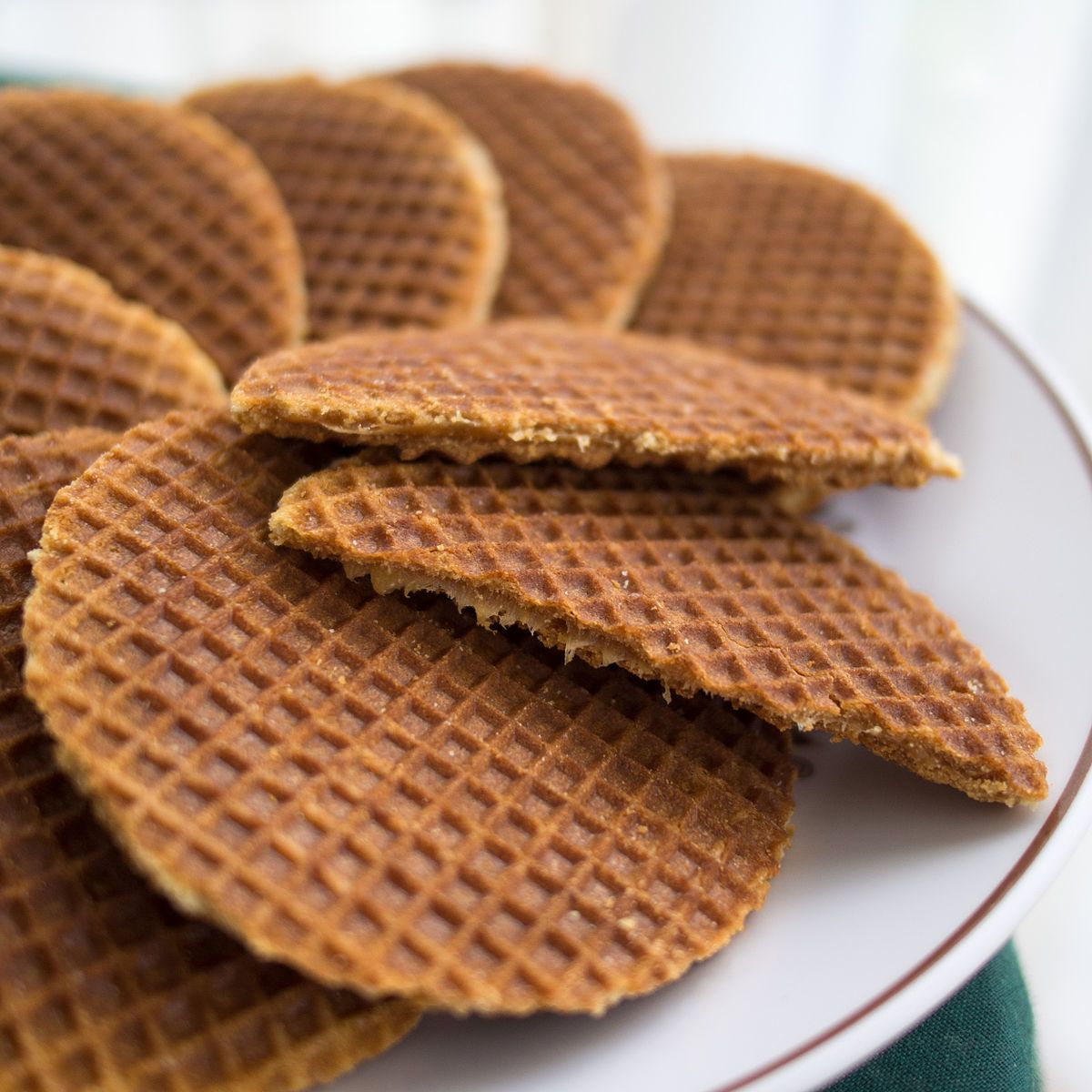BUSINESS NEWS
Stroopwafels finally find an American audience – here’s how
[ad_1]
Stroopwafels
Takeaway | WikipediaCC
John Sanders, a 22-year-old from Massachusetts, first tasted a stroopwafel when he was 5 or 6 years old, thanks to Dutch relatives. For years, he was only able to eat them when family members returned from trips to Holland.
But a couple of years ago, that started changing. Americans like Sanders who want to buy the caramel waffles stateside can now find them more easily. Once relegated to European specialty stores, the treat has made the jump from elusive obsession to mainstream purchase.
In June, McDonald’s introduced the Dutch treat to the masses when it included a Stroopwafel McFlurry as one of four limited-time international menu items. United Airlines said earlier this month that stroopwafels would join pretzels as a permanent inflight snack option.
Food trend expert Kara Nielsen attributed the growing popularity of the wafers to an interest in global “authentic” foods — particularly from millennials, who travel more than any previous generation — and a flavor that’s comfortable for Americans despite its Dutch name.
“It is very approachable. This cookie fits into what Americans like to eat: It’s crunchy, crispy biscuit and then that caramel,” said Nielsen, vice president of trends and marketing at CCD Helmsman.
Salted caramel’s popularity a decade ago set the stage for a generation of people looking for a more balanced version of caramel, Nielsen said.
The companies that make stroopwafels are mostly private and declined to share sales data. Stroopwafels are a part of the filled biscuit category, which Euromonitor expects will reach $4.3 billion in sales in 2019. That represents a 1.8% jump from last year’s sales, although growth in the category has slowed moderately.
Stroopwafels’ rise follows a familiar trajectory for trendy foods that emerge from obscurity to appear in grocery stores and fast-food restaurants.
According to Helmsman’s Nielsen, American food trends materialize in five stages, starting at fine dining establishments, then specialty food magazines and stores. Next comes landing at recreational cooking stores like Williams-Sonoma, then women’s magazines. The final step is grocery store shelves and fast-food restaurant menus.
The Dutch invented stroopwafels in the late 1700s or early 1800s, sandwiching a thin layer of caramel syrup between two slim crispy wafers.
Americans started making stroopwafels during the recession as part of the general resurgence of artisan goods in the U.S., Nielsen said.
Shortly after, American-based start-ups that made stroopwafels began appearing, such as Rip Van Wafels and Belgian Boys. They introduced new takes on the stroopwafel, making them available in chocolate and other flavors. Rip Van Wafels developed a protein-packed version with fewer carbs and sugar.
Even when adapted for modern consumers, the two companies stuck to one tradition: manufacturing their stroopwafels in the Netherlands.
Stroopwafels’ big break came when United added them to its rotation of complimentary snacks for economy passengers. Beginning in December 2015, when the airline announced stroopwafels as part of its free snack lineup, Google searches for stroopwafels began trending upward.
United Airlines’ three complimentary snacks
Source: United Airlines
The distribution deal went to Daelmans, the worldwide leader in stroopwafels.
Despite its global popularity, Daelmans had previously tried but failed to get U.S. consumers hooked on its stroopwafels. For its most recent attempt, the family-owned business enlisted The Brand Passport, a New-York based company that helps overseas food brands enter the U.S.
Brand Passport CEO Tom Daly previously served in marketing and strategy roles at Pepperidge Farm and Godiva.
When Daly and his team started pitching stroopwafels to buyers, they had to try different strategies. They chose to call the snack by its Dutch name instead of “caramel waffles” to appeal to customers through Daelmans’ history and authenticity.
“We didn’t know quite what to do with it,” he said.
At least until they started telling buyers about a Dutch trick: Put a stroopwafel on top of hot coffee or tea. The caramel softens and becomes gooey as the waffle exterior warms.
United shared that technique through a 2015 social media video, building anticipation for stroopwafels’ February 2016 launch as part of a broader effort to improve customer satisfaction. By offering the snack on domestic morning flights, the airline introduced the snack to Americans who may never travel to Holland.
By then, passengers eager to eat more stroopwafels could find them at retailers like Target, Barnes & Noble and Starbucks. Dollar General and Walgreens soon followed.
When the airline removed the Dutch treat from its rotation in mid-2018 to introduce new snack options, customers let the airline know just how displeased they were about the decision on social media. The airline brought the snack back at the beginning of this year before extending its availability to all day in July.
Now McDonald’s is helping to introduce even more Americans to stroopwafels through its Stroopwafel McFlurry. The frozen dessert is the same one found at Dutch McDonald’s, down to the crushed-up Daelmans stroopwafels.
Google Trends data shows that searches for “stroopwafel” skyrocketed the week of June 9 to June 15 — the week of the launch of McDonald’s Worldwide Favorites.
“As broadly distributed as we have become in the last seven or eight years, most of America still doesn’t know what a stroopwafel is,” Daly said.
But the fast-food giant might face the same backlash from consumers as United when its U.S. stores stop selling the limited-time McFlurry flavor.
For his part, Sanders said he hopes that McDonald’s keeps the McFlurry flavor permanently.
[ad_2]
Source link











